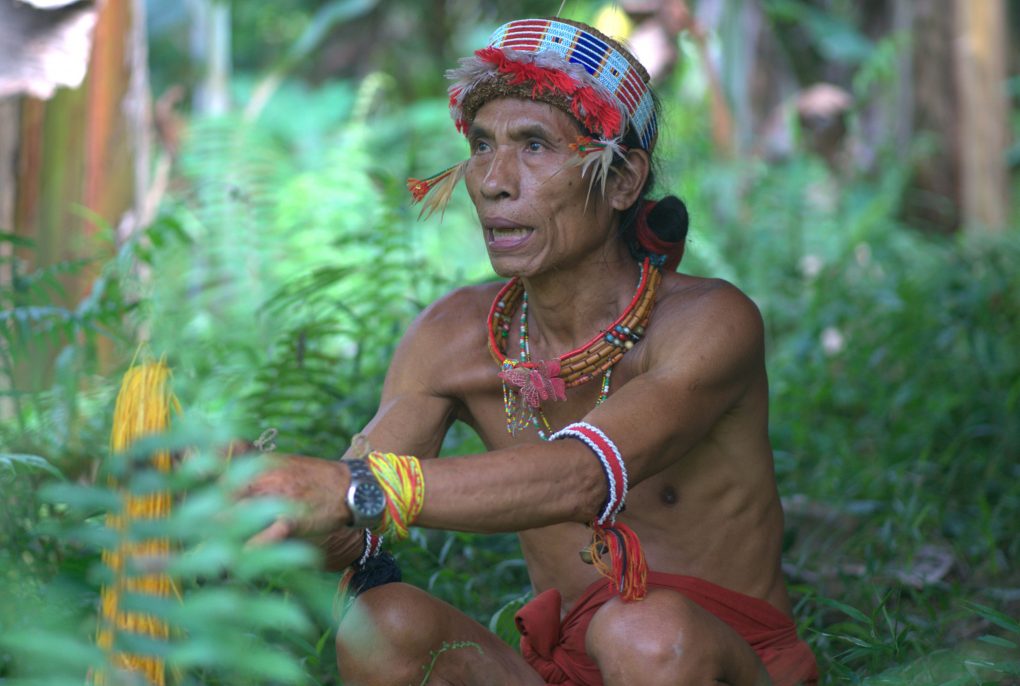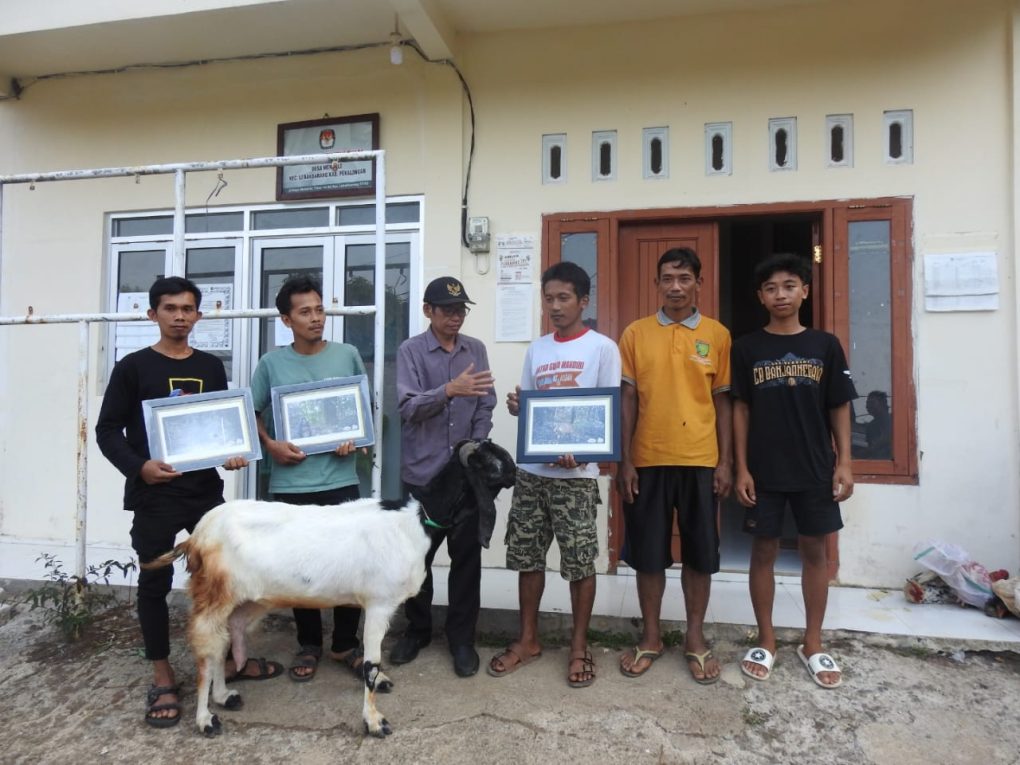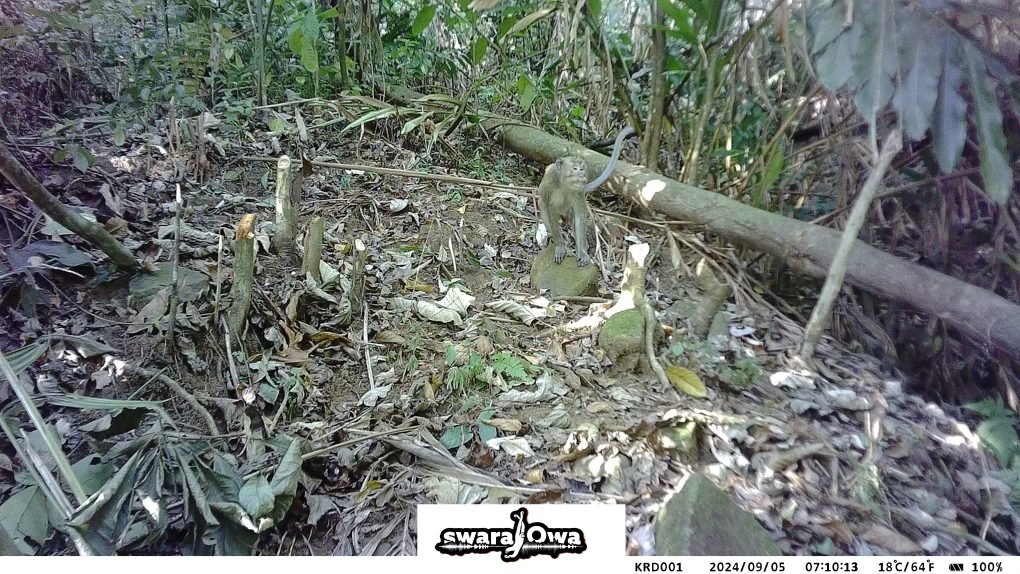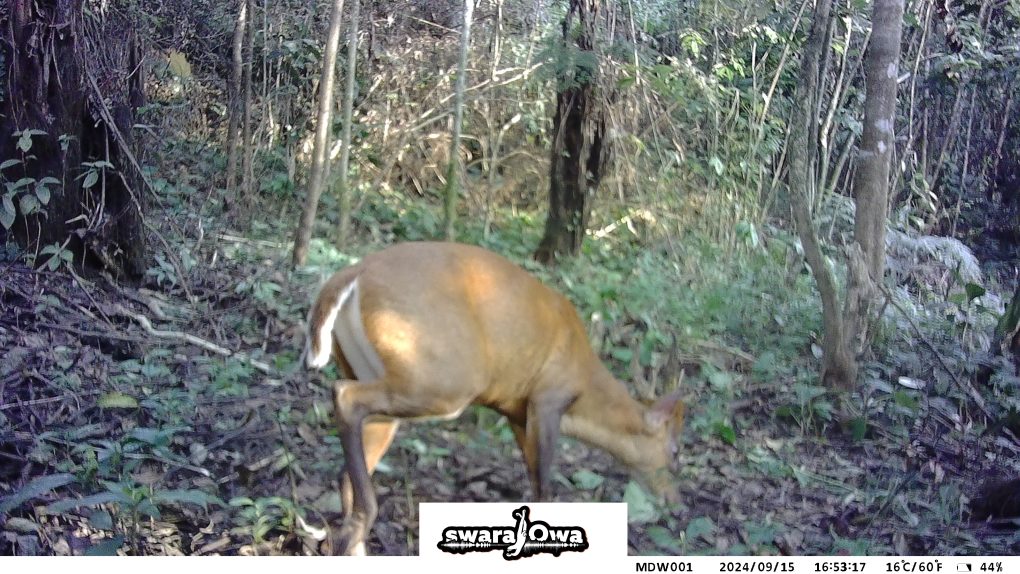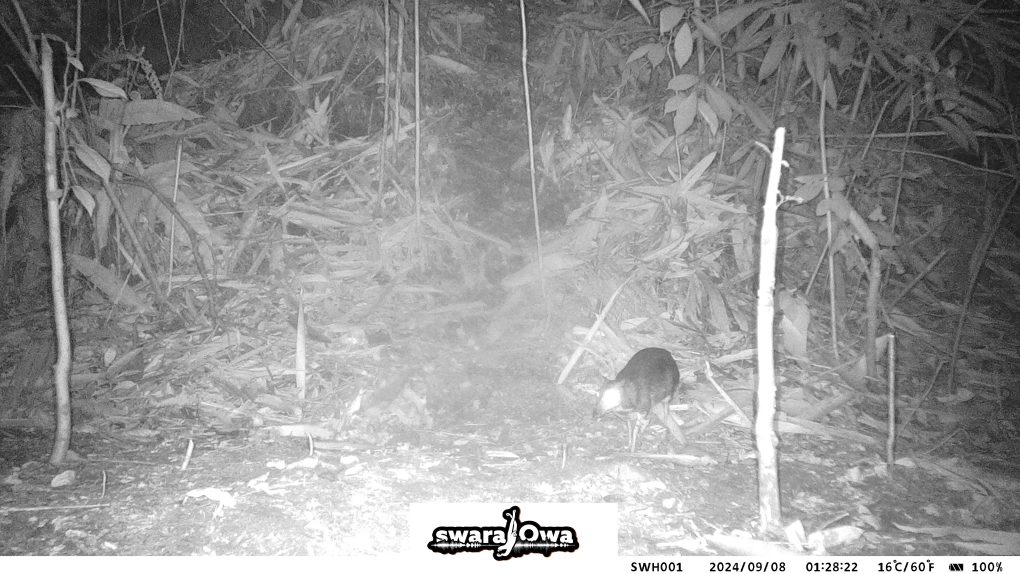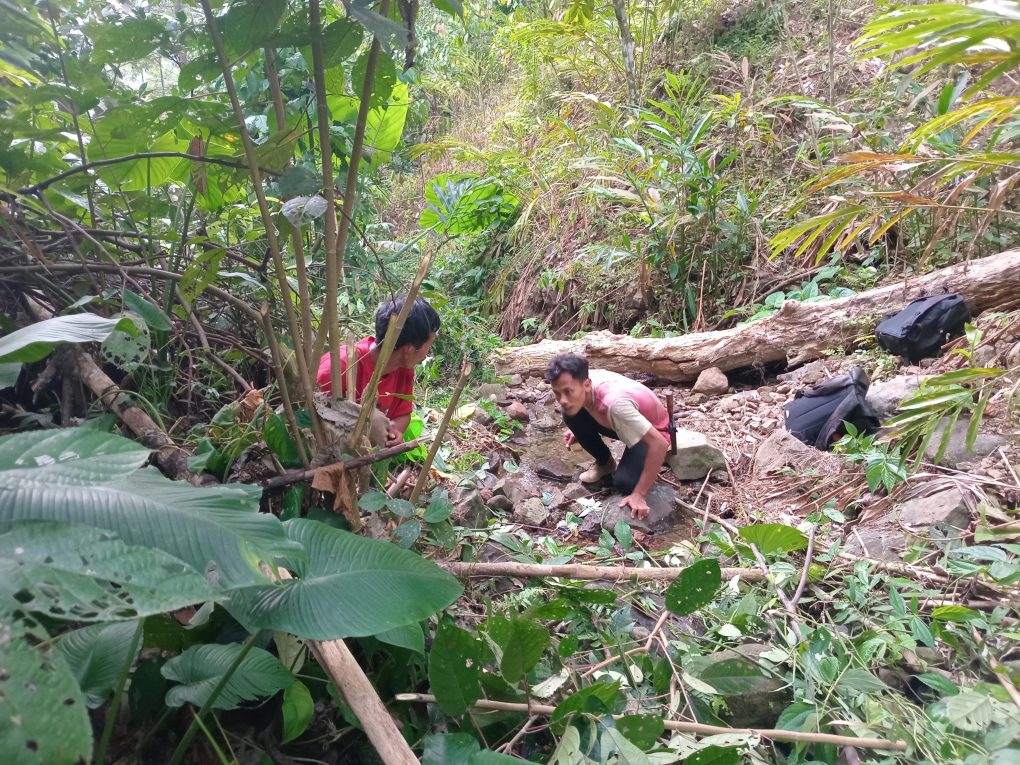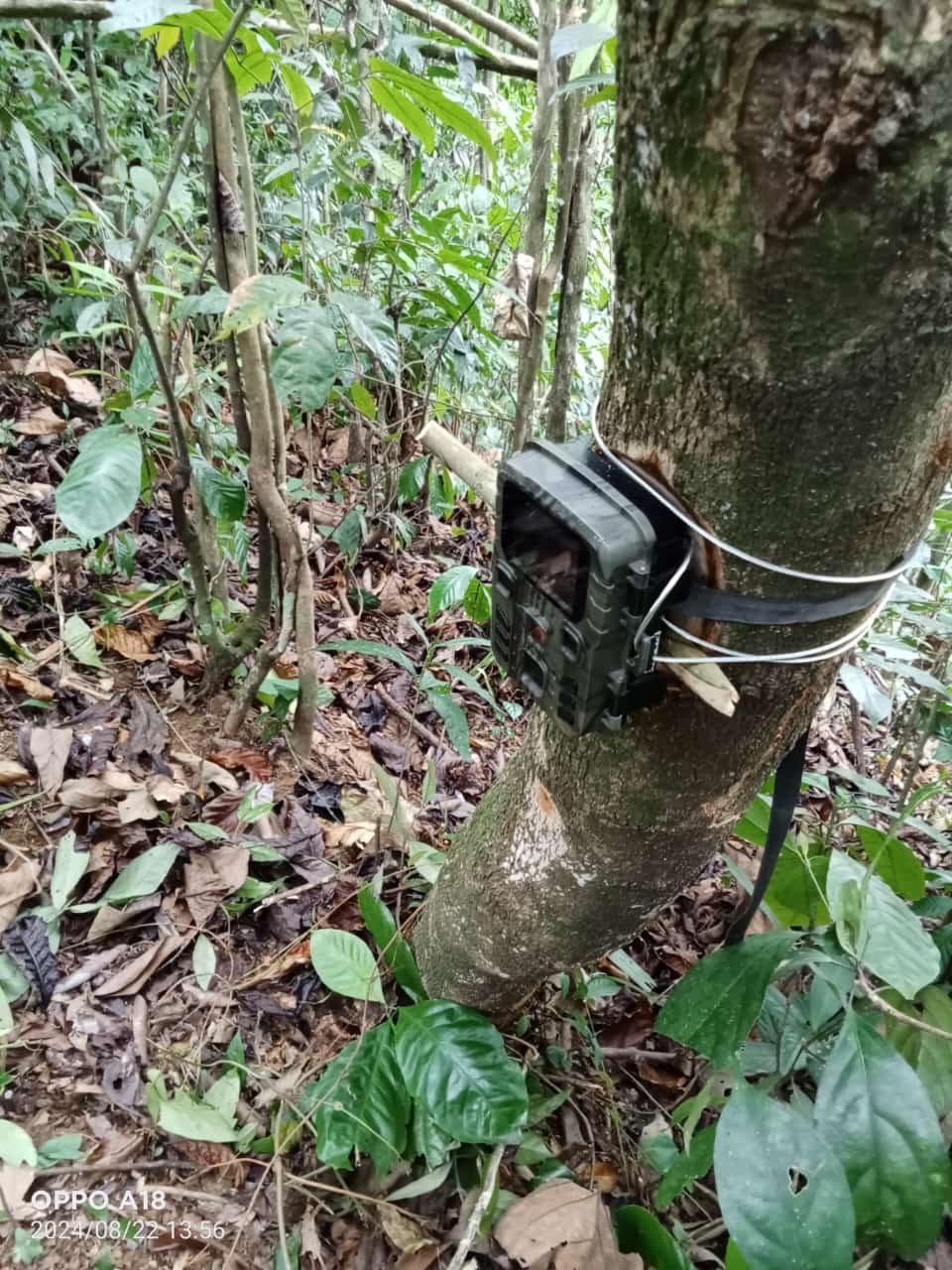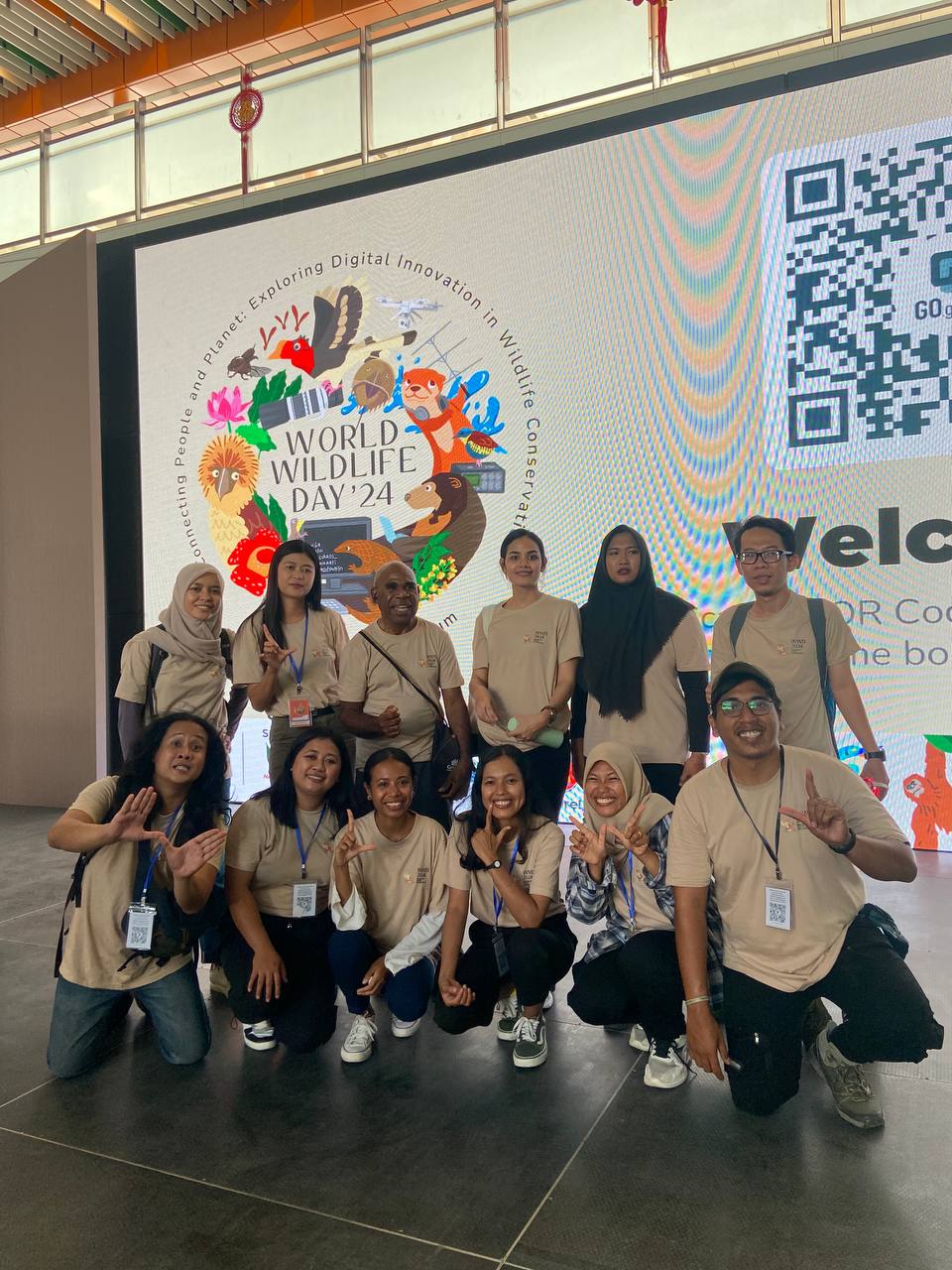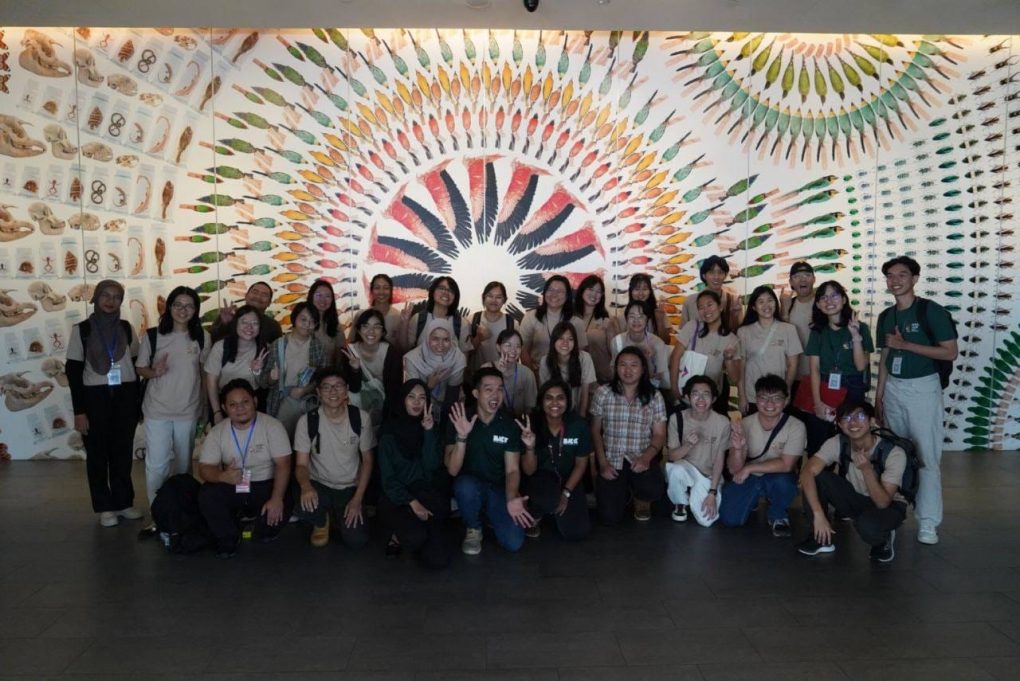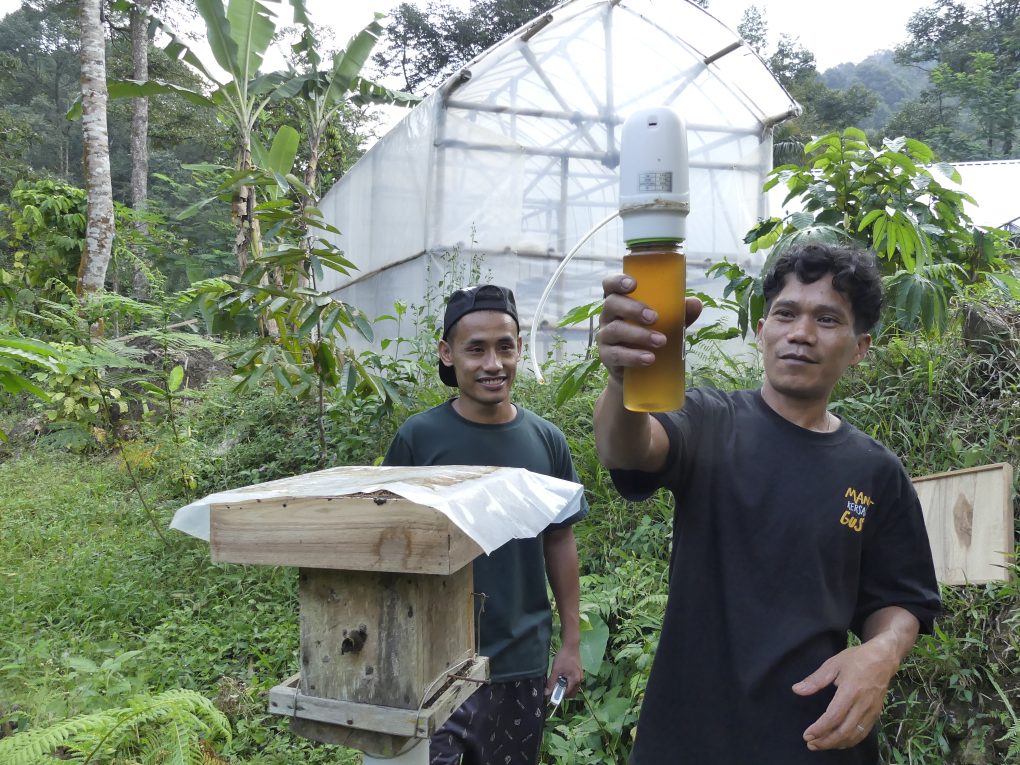
Rohim show his honey harvest
by : Sidiq Harjanto
The arrival of the dry season in the middle of this year brings blessings to the beekeepers in Mendolo Village, Pekalongan. Since the launch of the “Beekeeping for Gibbon Conservation” program in 2017, Swaraowa has continued to work with the beekeepers to further optimize the benefits of these tiny stingless bees, “Klanceng” in javanese. Bee cultivation offers a sustainable economic alternative for communities around the Javan gibbon habitat.
Tarjuki, as a pioneer in the cultivation of Klanceng in Mendolo village, last July harvested dozens of bottles with a capacity of 450 ml. A cheerful smile adorned his face when he shared his story with us. This amount of honey was harvested from boxes of klanceng that he put in several locations in his garden in Mendolo Wetan Hamlet. He is optimistic that this year’s harvest will increase compared to last year’s harvest.
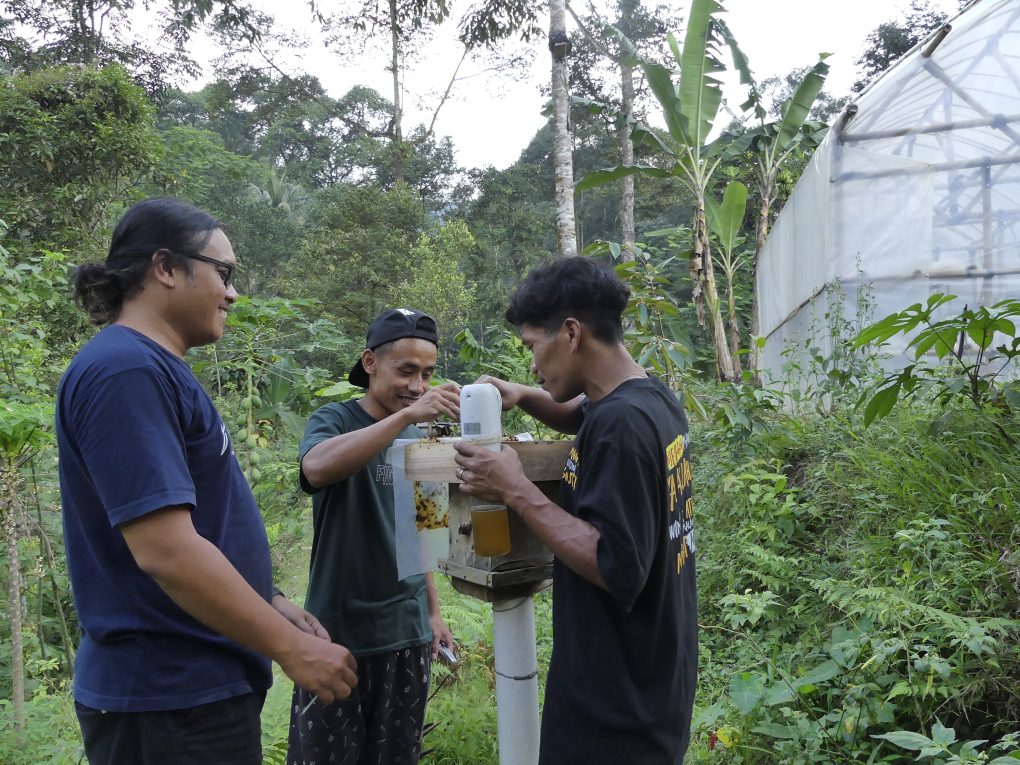
Swaraowa’s assistance for bee cultivation activities
In line with Tarjuki, Yukni Buhan, another farmer, also predicts a more abundant harvest this season. This young man who lives in Sawahan Hamlet now manages 9 boxes of Heterotrigona itama and around 40 boxes of Tetragonula laeviceps the two most productive of stingless bee in Javan gibbon habitat. “The first colony I kept was obtained from setting traps using empty boxes,” he recalled while showing a wooden box with small holes filled with tiny bees going in and out.
He has also harvested honey from his itama colonies. On average, one box produces a liter of honey. Meanwhile, he will harvest the boxes of laeviceps, a type of Klanceng with a smaller body size, during the durian flowering season, in the next two or three months. According to his experience, the peaks of the honey season are during the flowering season of Kayu Babi (Crypteronia sp.), then durian flowers, and finally during the flowering season of Kayu Sapi (Pometia pinnata), which is when the rainy season arrives.
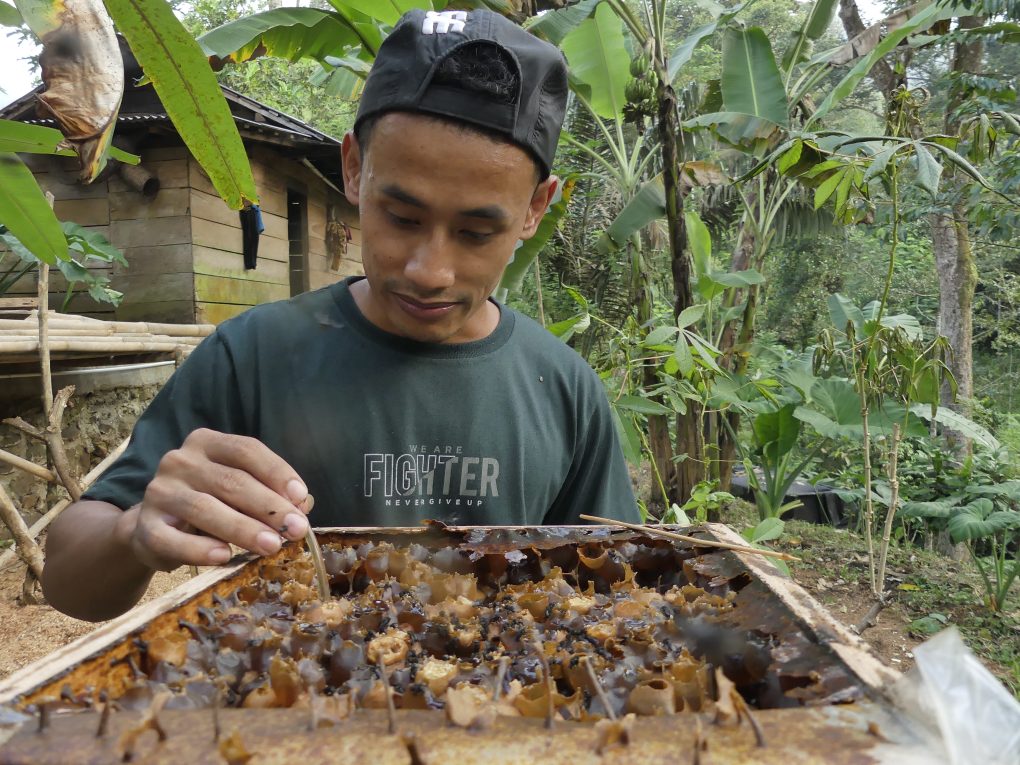
Yukni with his klangceng bee hive box
Yukni plans to continue adding to his Klanceng bee boxes using splitting techniques and setting traps. Asked about the readiness of the environmental carrying capacity at the cultivation location, Yukni was determined to continue planting various plants that could enrich the availability of food for bees, including forest wood.
Farmers not only get ease in harvesting honey obtained from cultivation. Nusri Nurdin, new beekeeper who also works as a wild bee honey harvester, received another blessing. Apart from harvesting Apis dorsata forest bee honey, he also harvests wild Klanceng honey on the side. Among the wild honey harvesters in Mendolo, the man known as Udin is one of the bravest. He did not hesitate to climb tall trees which were considered extreme by his professional colleagues.
The father of two children said that since the proliferation of cultivation carried out by Mendolo residents, it has become easier for him to find wild bee colonies. He suspects that as the number of colonies being maintained continues to increase, the population of bees in nature will also be increasingly maintained. “I have harvested seven colonies of Klanceng this season. “Everything has now been moved into boxes,” he said.
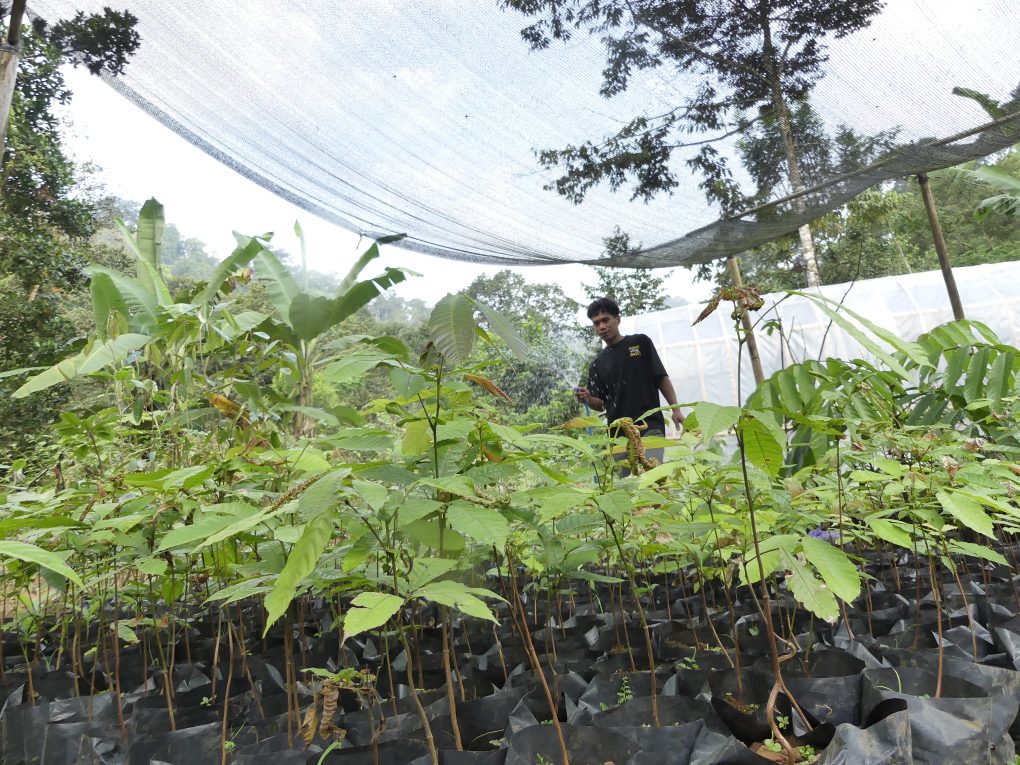
nursery for native trees to regenerate tree source for bees and other wildlife
Seven years ago, conditions were very different. At that time, the harvesters of wild Klanceng bees were still carrying out unsustainable harvesting. They dismantle the nest to get the honey and then just leave it until the colony is destroyed. There are countless bee colonies lost. Of course, we also lose the benefits of bees as pollinating insects.
Through a series of training programs, wild Honey Harvesters are directed to save wild bee colonies that harvested from the wild. The colonies were transferred into boxes for cultivation. Sustainable methods are also introduced, such as colony breaking techniques, grafting, and installing trap boxes.
Now, no less than 25 Mendolo residents have run a beekeeping business and are enjoying the sweetness of this environmentally friendly business. The number of colonies maintained by each breeder varies. However, the average is no less than 5 boxes. Some even have more than 20 boxes.
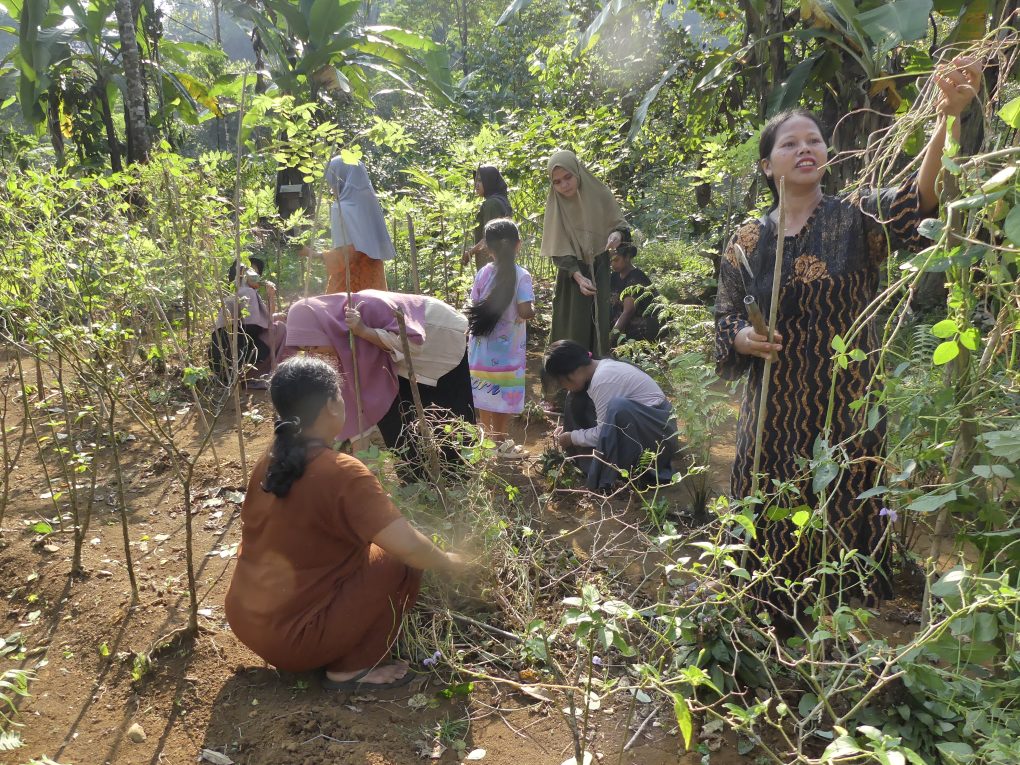
Women group activities
If the man and youth tend to cultivate to produce honey, the women’s group in Sawahan Hamlet does something different. Those who call themselves the “Brayan Urip Group” keep bees to optimize pollination services. On a plot of land planted with various vegetables, boxes of cloves of the type Tetragonula laeviceps were placed.
Many studies have concluded that this small sized Klanceng species is effective in helping pollinate vegetable plants such as chilies. “For chili plants that are not fertilized and without intensive care, the results are quite good,” explained Sri Windriyah, who is believed to be the group leader. The harvest from the collective garden is sold at low prices to members for their respective household needs. The profits are set aside as group savings.
Next to the vegetable garden managed by the Brayan Urip Group, a simple nursery can be seen filled with hundreds of polybags containing seeds of various types of plants. The awareness that beekeeping requires a supportive environment, especially the existence of forests, has encouraged the beekeeping community to carry out planting movements. That’s why this nursery was created, as a supplier of seed needs.
Rohim, who is in charge of the nursery in Sawahan, said that this year the nursery he manages will provide at least 700 forest wood seeds such as Kayu Sapi (Pometia pinnata), Kayu Babi (Crypteronia sp), Klepu, Mangosteen and Kayu Salam. Hundreds of seeds are being prepared to be planted during the rainy season.
“Last year, two hundred pangium seedlings were planted along the river channels in Sawahan Hamlet,” said Rohim. The planting was carried out in a participatory manner. Approximately 20 farmers provided their land for planting. Residents are increasingly motivated to actively plant after experiencing water shortages due to the El-Nino phenomenon last year.
For Swaraowa, involvement in this collaborative planting program is a form of effort to improve the quality of habitat for primates and other wild life. Mendolo Village itself is a habitat for five types of Javanese primates: Javan gibbon, Javan langur, rekrekkan, long-tailed monkey, and Javan slow loris. The conservation activities by opening up space for the community as the main subject has started from this village.


